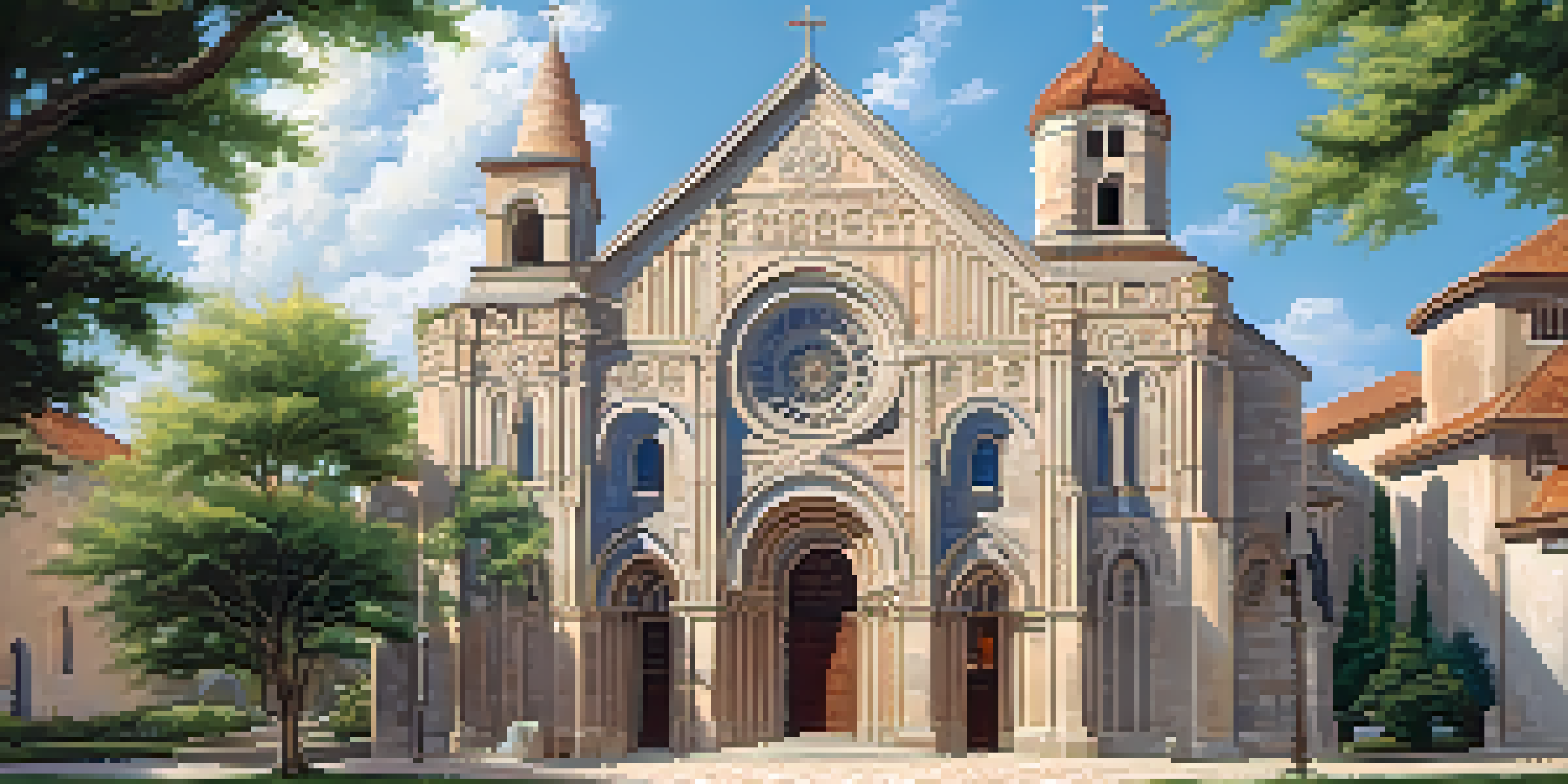Romanesque Architecture: Spain's Historic Churches Explored

An Introduction to Romanesque Architecture in Spain
Romanesque architecture, emerging in the 10th century, is a style that signifies a pivotal moment in Spanish history. Characterized by its robust structures, rounded arches, and thick walls, this architectural style reflects the stability and strength of the era. Spain, with its diverse regions, showcases a unique interpretation of Romanesque design, blending local traditions with the influences of the Roman Empire. As we delve into the churches of Spain, we uncover stories that echo through centuries, inviting us to appreciate their beauty and historical significance.
Key Characteristics of Romanesque Churches
One of the standout features of Romanesque churches is their massive stone construction, which gives them a fortress-like appearance. The use of semi-circular arches and barrel vaults not only adds to the aesthetic but also provides structural integrity. Additionally, thick walls often include small windows, creating a dimly lit yet intimate atmosphere within. These design elements come together to create spaces that feel both sacred and secure, a reflection of the spiritual priorities of the time.
Romanesque Architecture's Significance
Romanesque architecture in Spain represents a pivotal historical moment, showcasing robust structures that blend local traditions with Roman influences.
The Role of Sculpture in Romanesque Architecture
Sculpture played a significant role in Romanesque architecture, often adorning the facades and portals of churches. These sculptures served both decorative and educational purposes, depicting biblical scenes and saints to convey religious narratives to a largely illiterate population. The intricacy of the carvings, from whimsical creatures to detailed biblical figures, invites viewers to explore deeper meanings within their faith. This artistic expression not only beautifies the structures but also connects the viewer to the spiritual messages they represent.
Notable Romanesque Churches in Spain
Spain is home to several remarkable Romanesque churches that stand as testaments to this architectural style. One such example is the Santiago de Compostela Cathedral, known for its ornate façade and historical significance as a pilgrimage site. Another is the Church of Santa María la Real in Nájera, which features stunning cloisters and intricate altarpieces. Each of these structures tells a unique story, offering a glimpse into the cultural and religious landscape of their time.
Sculpture's Role in Romanesque Design
Sculpture in Romanesque churches serves both decorative and educational purposes, depicting religious narratives that connect viewers to their faith.
The Influence of Romanesque Architecture on Later Styles
The impact of Romanesque architecture can be seen in the subsequent Gothic style that emerged in the 12th century. While Gothic structures are known for their soaring heights and stained glass, many of their foundational elements, such as the use of arches and ribbed vaults, were inherited from Romanesque design. This evolution highlights how architectural styles adapt and transform over time while still paying homage to their predecessors. Understanding this lineage not only enriches our appreciation of Romanesque churches but also deepens our connection to the broader narrative of architectural history.
Challenges in Preserving Romanesque Churches
Despite their historical significance, many Romanesque churches face preservation challenges due to environmental factors and urbanization. Weathering, pollution, and inadequate funding can lead to deterioration of these architectural gems. Conservation efforts require careful planning and expertise to maintain the delicate balance between preserving original features and accommodating modern needs. Engaging local communities in these initiatives can foster a sense of ownership and encourage support for the ongoing preservation of their cultural heritage.
Preservation Challenges Ahead
Many Romanesque churches face preservation challenges due to environmental factors and urbanization, necessitating careful conservation efforts.
Visiting Romanesque Churches: Tips for Travelers
If you're planning to explore Spain's Romanesque churches, consider timing your visit to coincide with local festivals or events that celebrate their history. Many churches offer guided tours that delve into the architectural details and historical context, enhancing your experience. Don’t forget to bring a camera, as the intricate details and monumental structures make for stunning photographs. Lastly, take a moment to reflect on the stories these churches hold, connecting you to the past in a profound way.
Conclusion: Celebrating Spain's Romanesque Heritage
Spain's Romanesque churches are not just buildings; they are storytellers of a rich historical tapestry. From their architectural features to the art that adorns them, these structures invite us to appreciate a past that shaped the present. As we celebrate this heritage, it’s vital to support preservation efforts that ensure future generations can experience these wonders. By exploring and understanding these churches, we not only honor the craftsmanship of the past but also foster a deeper connection to our shared cultural identity.